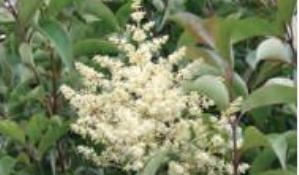Media release: Waikato Regional Council, 19 November 2014
Reminder that new rules cover enforced privet removal

It’s the time of year when privet blossoms, potentially contributing to respiratory disorders such as hayfever.
Waikato Regional Council is reminding people who think privet on a neighbour’s property is causing them these kinds of problems that new rules are in place covering when the council will require neighbours to remove the plant.
“Basically people have to get a positive allergy test for privet before we will consider making a neighbour remove it,” said biosecurity officer Darion Embling.
“Under our new Waikato Regional Pest Management Plan, the privet allegedly causing the problem must be within 50 metres of the property boundary or in public amenity areas, such as parks and playgrounds, or in frequently used thoroughfares.”
Those wanting an allergy test can contact their GP or local allergy clinic.
Mr Embling said that while the pollen and scent of privet is believed to contribute to respiratory disorders there is no evidence of a direct link. Also, research shows privet is not a strong allergen for the majority of people.
“That’s why we’ve developed the new approach to privet. It provides a basis for affected people to take action but they need to get an allergy test and the position of the privet said to be involved has to meet strict criteria before we’ll formally require its removal,” said Mr Embling.
However, the council is also helping fund more research into privet’s potential effect on people and it encourages landowners to control privet on their properties.
Privet itself is banned from sale, propagation, distribution or commercial display. Also, in some residential areas there are community-driven initiatives under which people are still required to destroy privet. These include residential areas in Tuakau, Whatawhata, Ōtorohanga, Te Kūiti, Pirongia, Kihikihi, Orini, Mangatarata, Te Aroha, Waihi and Paeroa.
Mr Embling said privet is a widespread ecological pest in Waikato.
“Privet rapidly invades bush margins and waste areas and the leaves and berries are poisonous to animals and humans. Tree privet is capable of crowding out canopy trees in native forests. It may also impede native seedling germination and may eventually dominate an area of forest. Chinese privet can displace shrubs on the margins of native forests.
“If you have privet it is recommended that you remove privet immediately to prevent further spread,” said Mr Embling.
For more information about the control options for privet and a list of other pest plants, visit www.waikatoregion.govt.nz/rpmp or call biosecurity staff on 0800 BIOSEC (0800 246 732).
